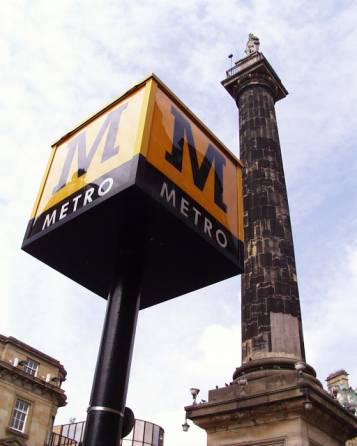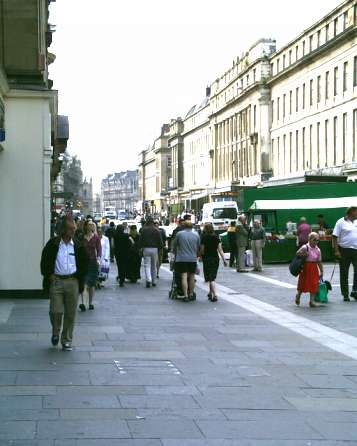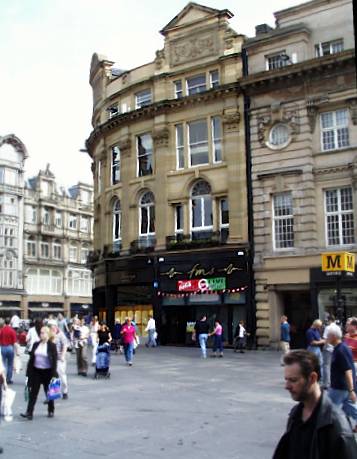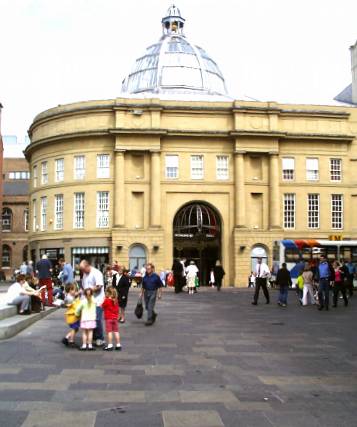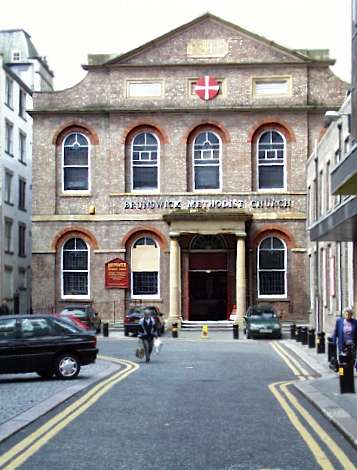|
|
 |
 |
 |
 |
|
Monument Sat. 1st July, 2000 |
|
|
He stands on a column of 41 metres (133ft) atop a pediment of 4.5 metres (14ft), and commands a
unrivalled rooftop view of the city. He is Earl Grey, inventor of tea mixtures and Prime Minister responsible for passing the 1832 Government Reform Bill that paved the way for modern parliament in this
country.Below its base lies buried a Victorian Glass time capsule containing the original plans for the monument, and some gold and silver coins and medals donated by the then Mayor, John
Fenwick. It was completed in 1838, and the city's church bells pealed for the grand unveiling on 24th August. |
|
 |
|
Earl Grey looks south down Grainger Street, here seen thronging with Saturday shoppers. The earl was
sculpted by Edward Baily, afterwards chosen to create Nelson's Column in Trafalgar Square, London in 1839.Richard Grainger came from humble beginnings to become
the brains behind the development of the central commercial heart of the city. His master stroke was to purchase Anderson Place, a rambling mansion within 12 acres of ground in the city centre. He promptly
demolished the mansion and linked with architect, John Dobson, and Town Clerk, John Clayton to save the centre from the worst excesses of Victorian development.
|
|
|
 |
|
At the junction of Grey Street and Blackett Street stands the elegant Eldon Grill, for many years
the most famous gay meeting place in the region. Built in 1893 its graceful lines belie its namesake.John Scott Eldon (1751 -1838) was the son of a wealthy Newcastle coal family. His
chances were spoilt for a while by his elopement with Bessie Surtees, but he soon regained favour, becoming a lawyer and later High Chancellor of England. He was a profound
anti-Catholic and Conservative, fighting change at every opportunity. He was renowned for slowing the legal process in England to a snail's pace. It is fitting that the area named after him should have been
the site of one of the most radical city building developments of the 20th century. |
|
|
|
|
 |
 |
|
On the opposite side of Blackett Street is the new Monument Mall, a clever fusion of old styles and new
technology. It replaces an rather dull and impractical 1920s office block and a glass plated corner shop cobbled together from lego leftovers in the 1960s. Buses are the only vehicles allowed to pass through
here, it being very much "people centred". This was once one of the most congested and dangerous traffic junctions in the city. It is now a popular meeting place and arena for performing arts and musicians.
To the left of the Mall you can see a section of the Brunswick Methodist Church in Brunswick Place, a narrow medieval lane leading to Northumberland Street. |
|
 |
 |
|
The simple lines of this brick faced building date from 1815, just predating the surrounding development. Fenwick's
Department Store is to the right, dating from 1923, although Mr. J. J. Fenwick had been trading here in fine clothing since 1882. He was also that Mayor who contributed trinkets for the time capsule under
the monument.For many years the Brunswick Methodist Church has offered its "Listening Ear", attempting to alleviate the stress of life by dispensing helpings of empathy and tea. The white building to
the left is the rear of Emerson Chambers, featured on
20th May, 2000. |
|
|
 |
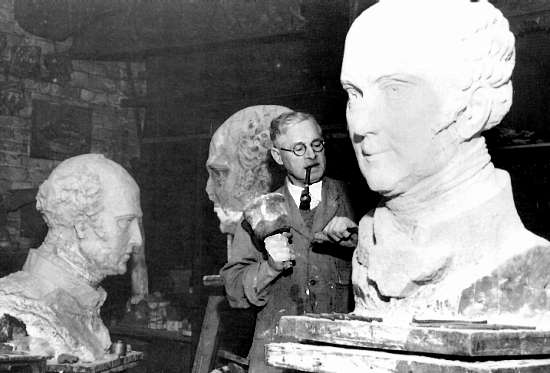 |
 |
 |
 |
 |
|
During 1941 the Earl's head was knocked off by a bolt of lightning. He had survived the Luftwaffe, unlike the nearby shipyards at Walker
and Sunderland. His bonce came bouncing down to the ground and smashed in pieces. Fortunately, no one was standing underneath at the time. The fragments were stored for the duration of the War, until in 1947, they were
glued together, before a plaster cast was made from which the sculptor Roger Hedley created a new head. The original is seen here behind the artist, the plaster cast being to the left. (Photo courtesy of Julian Brown)
|
|
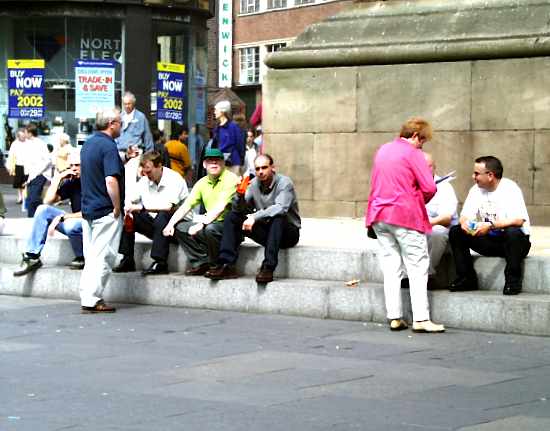 |
|
|
So now, on sunny days, people gather at the foot of the famous monument. For many it is the launch pad for a blossoming relationship, for
others a gossip on a Saturday shopping expedition. For some it is the scene of the dawning reality that the expected person is not going to arrive. Pangs of rejection and anger cloud the vision as the traveller turns
away from the bustling centre of so much joy, now so cruelly denied. |
|
|
 |
|
|
 |
|
If you should arrive here via a search, or be missing the navigation on the left hand side, click this button.
|
|



